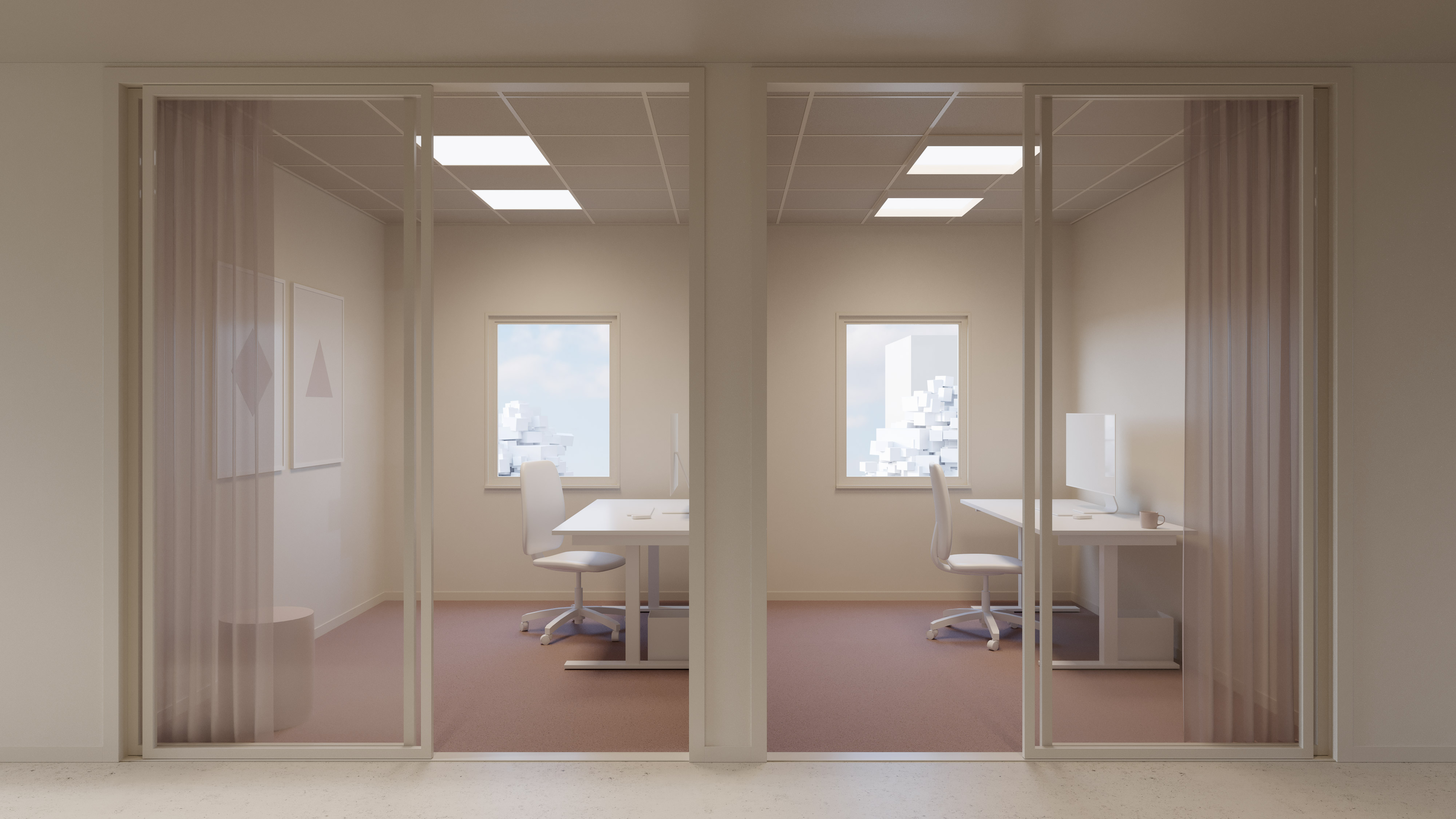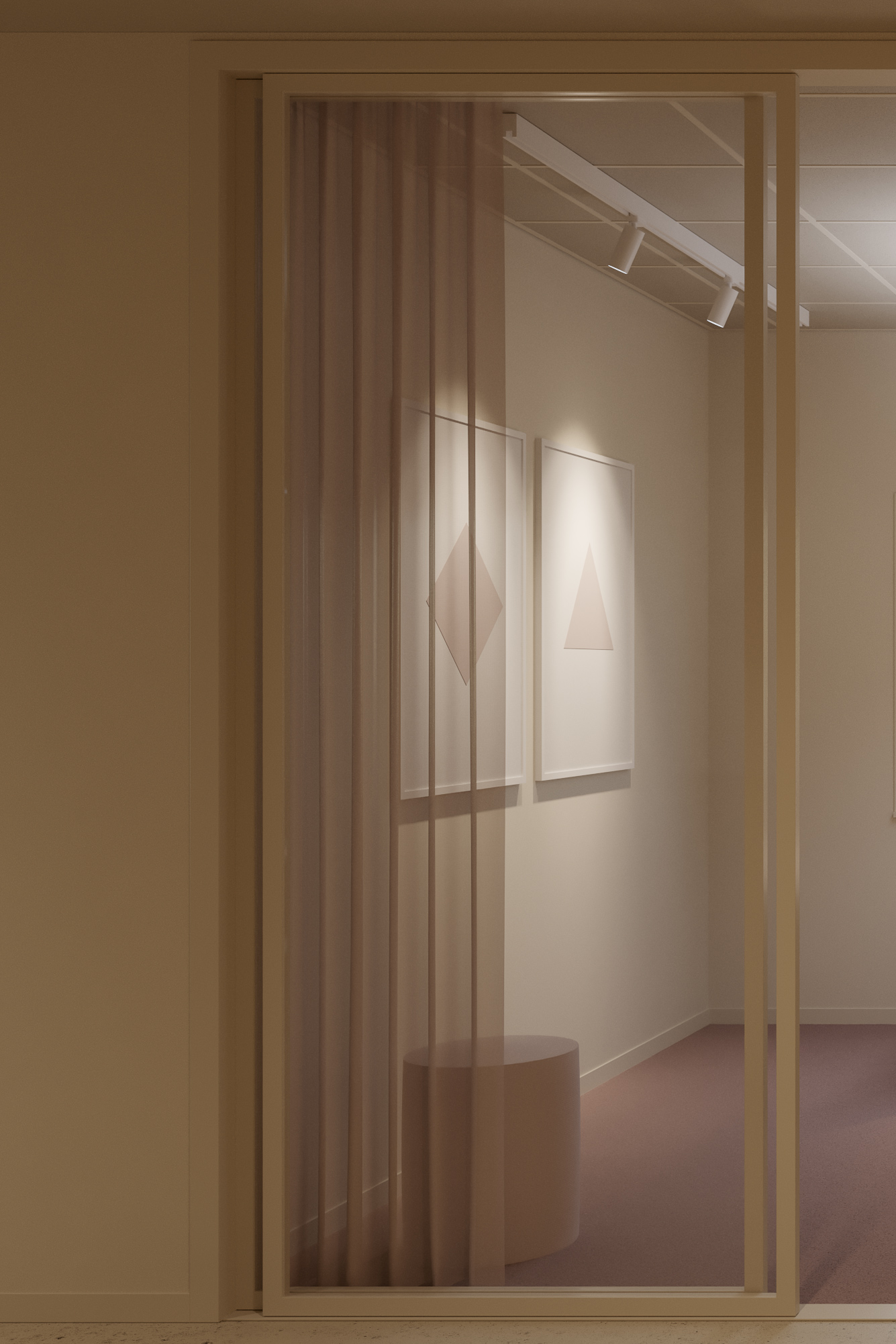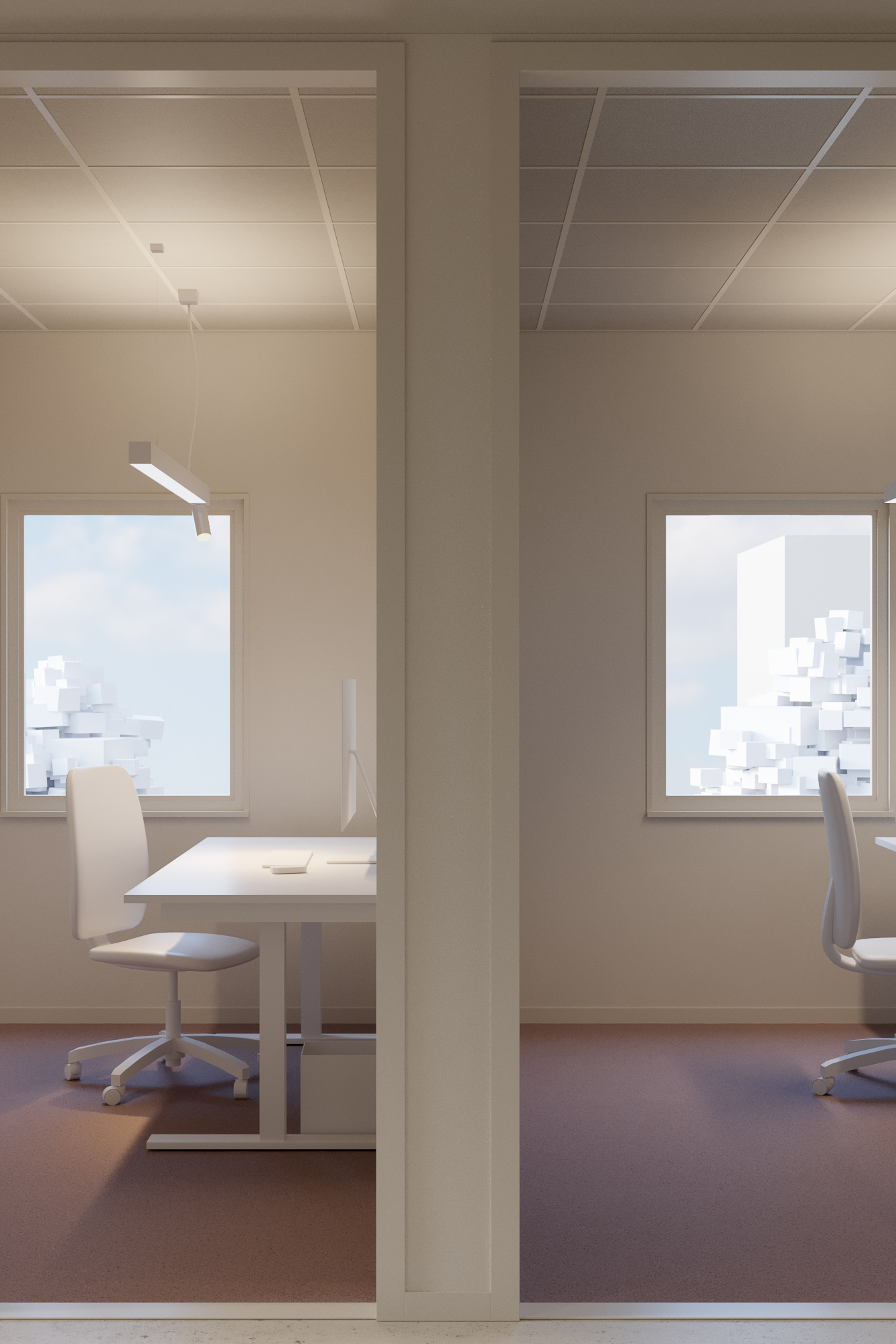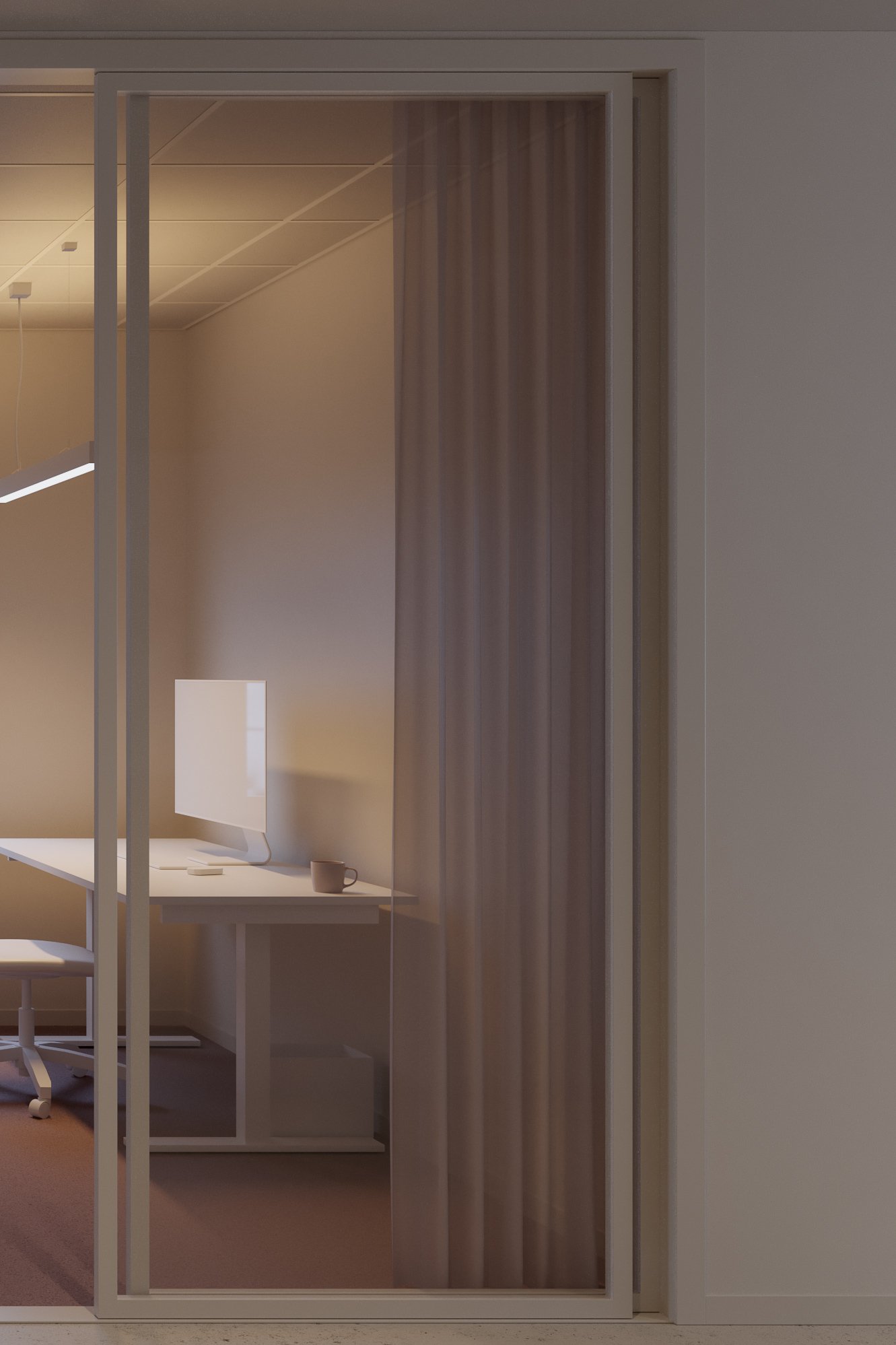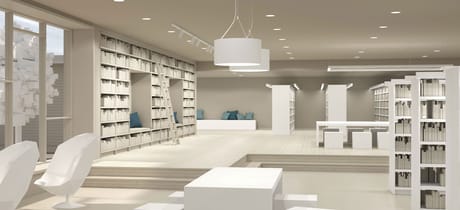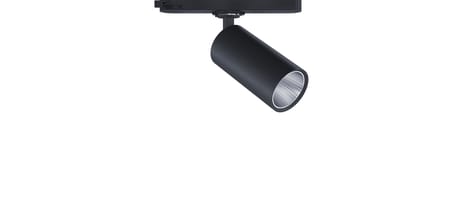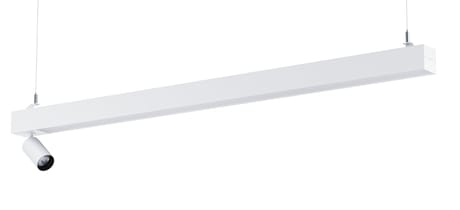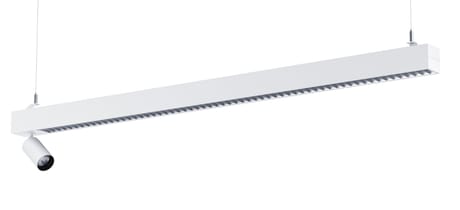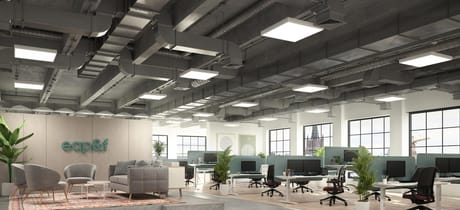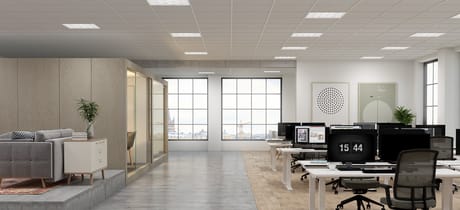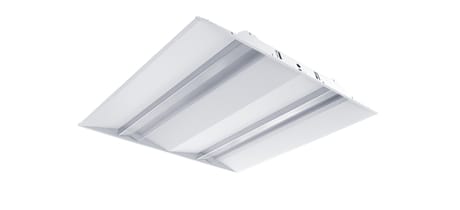Individual offices
Although the trend has long been towards large open-plan offices, there is still a need for smaller individual workspaces. Being able to get away and work or talk undisturbed in the workplace is still an important function.
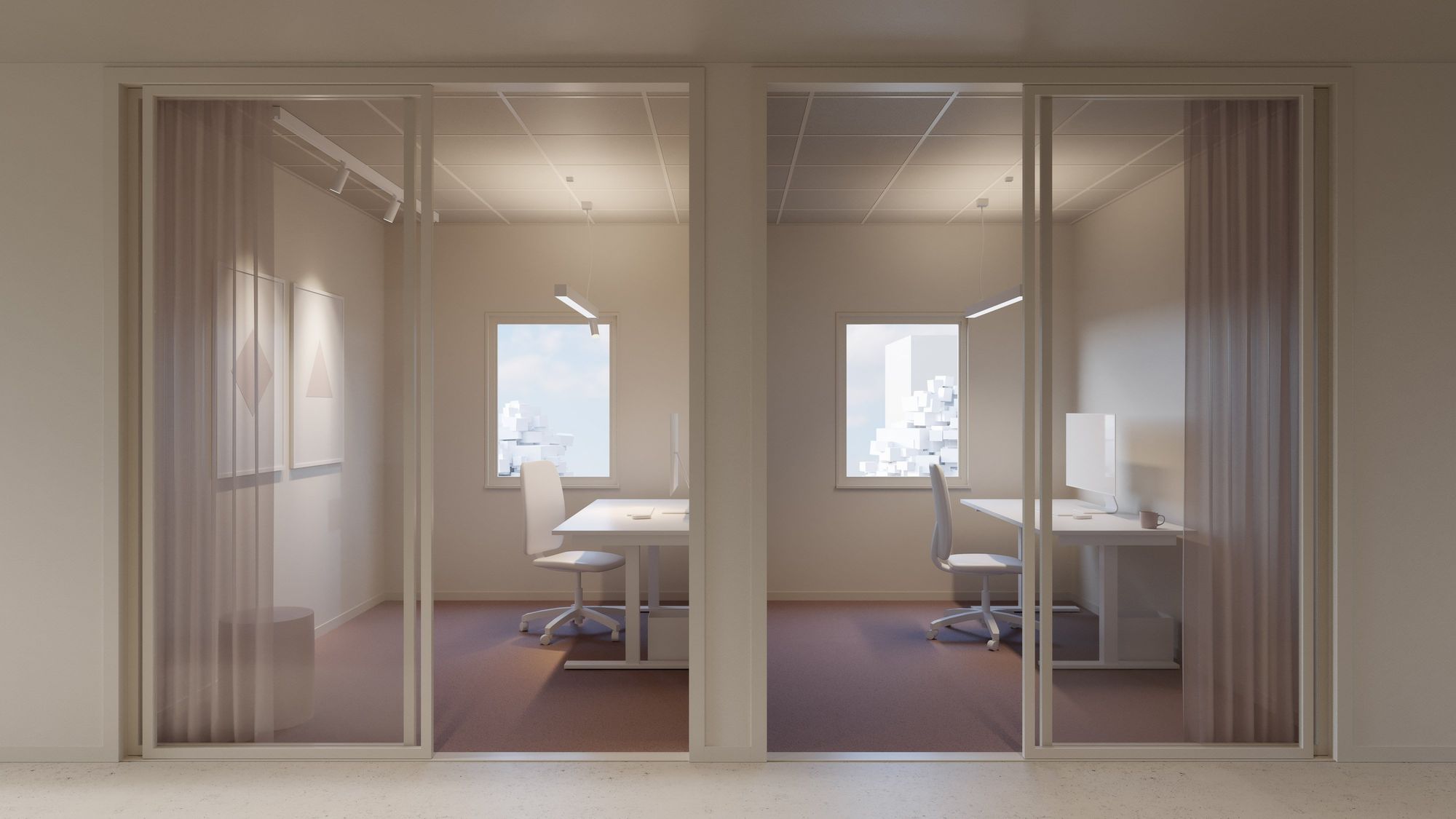
Custom lighting for work requiring concentration
The individual, and secluded, office space is well suited for conversation or concentrated work in peace and quiet. Appearances may vary, but the main thing for employees is comfort and function. A well-thought-out lighting solution contributes considerably to the perceived sense of well-being, and in some cases can also increase productivity.
Recessed or suspended?
The examples show two solutions, one with recessed luminaires and one with suspended lighting. Both proposals are well-functioning lighting solutions for individual offices.
1. Recessed lighting provides comfortable and well-balanced ambient lighting for workplaces.
The recessed lighting solution is simple and maintenance-free that works well in offices that are to be used by many different people and for various tasks. The recessed luminaires provide comfortable and balanced ambient lighting, and are also available with accessories for an enhanced aesthetic feel and reduced glare.
In the suspended solution we have an office luminaire with direct/indirect light distribution, providing comfortable ambient lighting with good illumination of the workspace.
2. A suspended luminaire combined with direct diffuse lighting from a spotlight produces a space-creating environment, rich in contrast.
However, if you want to create additional dynamics in the office space, there are lighting solutions for that as well. Combining a suspended luminaire with diffuse lighting and directional lighting from a spotlight mimics the alternating lighting of the outdoors. The different luminaires have different colour temperatures and illuminance, and the clear direction of light provides a more contrast-rich and space-creating environment, with better depth and shadows. The solution can also be complemented with a pair of narrow-beam spotlights at the wall, contributing to a greater feeling of space in the room with more contrast.
According to the standard, there must be at least 500 lx at the workspace, which all our lighting solutions above provide. Lighting of the immediate and peripheral surrounding areas shall be related to the lighting level within the working area and in addition create the conditions for well-balanced luminance distribution within the normal field of vision. However, it is a value that may need to be adapted to the person using the room. In individual offices there are also often one or more computer displays, which is important to take into account in terms of glare and reflections.
Lighting control for individual offices
Individual workplaces provide a greater opportunity to adapt a room for those who use it the most. Different people have different needs, depending on age and the type of work they do. In order to best meet the needs of the individual, we recommend that the luminaires can be personalised with either control or manual functions, for example with Push dim or Organic Response sensors.
Light planning according to Human Centric Lighting
Human Centric Lighting comprises lighting solutions that meet people’s visual, biological and emotional light needs by means of a combination of daylight and electric lighting. With lighting that supports the human circadian rhythm, it is possible to create work environments that help people both to sleep and feel better, as well as to be more productive. This is achieved, in part, through a combination of different levels of light intensity as well as different colour temperatures. To get the right dose of light, we can either opt for a large amount of light for a short period of time or less light for a longer period, ranging from 30 minutes to 3 hours. Here at Fagerhult, we recommend starting the day with 250 melanopic lux for 2 hours.
Lighting with a biological impact on our circadian rhythm can be planned within the framework of all lighting projects using the factor Melanopic Ratio, which we present for all our luminaires.
Recommended lighting in the morning 6000 K, at noon 4000 K and in the afternoon, 3000 K.
